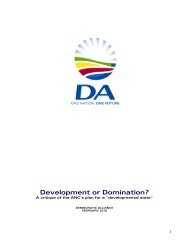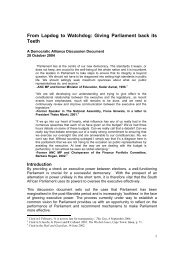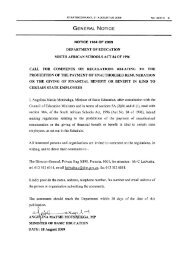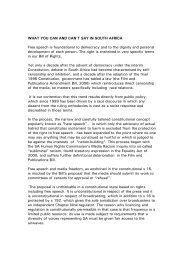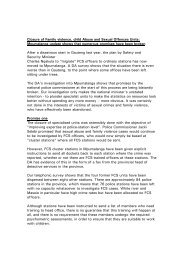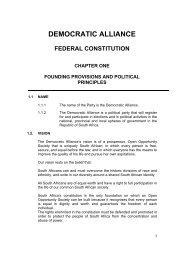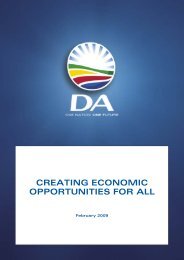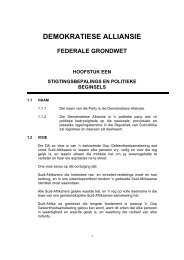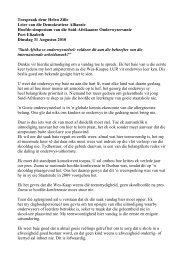DA's Plan for Growth and Jobs - Democratic Alliance
DA's Plan for Growth and Jobs - Democratic Alliance
DA's Plan for Growth and Jobs - Democratic Alliance
You also want an ePaper? Increase the reach of your titles
YUMPU automatically turns print PDFs into web optimized ePapers that Google loves.
have the intended effect. In developing this set of proposals, the DA has used an approachknown as evidence-based policy making (EBP), which uses the best empirical evidence, <strong>and</strong>engages in sound analysis of the available policy options.It is an approach that is increasingly regarded as international best practice. Althoughmethodologies differ from place to place depending on the relevant national context,consistent with EBP approach is the need to gather in<strong>for</strong>mation from, <strong>and</strong> consult, a widerange of sources <strong>and</strong> stakeholders.The policies contained in this document have been developed using the best availablenational <strong>and</strong> international research; engagement with experts from the worlds of economics<strong>and</strong> public policy; <strong>and</strong> ‘frontline’ policy experience from practitioners in DA provincial <strong>and</strong>local governments.Another key aspect of the approach is benchmarking. On the one h<strong>and</strong>, internationalbenchmarks are helpful indicators of how South Africa compares on a particular issue (say,the quality of the education system) <strong>and</strong> where we need to work harder to achieve betteroutcomes.On the other, in instances where countries at a similar level of economic development havesuccessfully tackled a difficult issue, they provide useful policy lessons that we can adapt<strong>and</strong> use here in South Africa. In developing these proposals, the DA has drawn on, <strong>and</strong>learned from, the policy re<strong>for</strong>m programmes rolled-out in comparable middle-incomecountries such as Brazil, Turkey <strong>and</strong> Malaysia.Policy designThe fundamental objectives of this policy document are to break down the barriers thatexclude people from the economy, <strong>and</strong> lay the foundations <strong>for</strong> a dynamic, integrated <strong>and</strong><strong>for</strong>ward-looking society by putting South Africa on a path to rapid economic growth.Because it includes many different types of policy initiatives, however – from legislativeproposals <strong>and</strong> amendments to the introduction of financial incentives, all with varyingdegrees of impact <strong>and</strong> utilising competencies from different spheres of government – there isthe danger that the policy programme can become simplistic or incoherent.To prevent this, <strong>and</strong> ensure that each proposal addresses a specific policy challenge toproduce a measurable outcome, the document is arranged along four primary axes. Theseare: issue area, core challenge, policy outcome, <strong>and</strong> timescale.Results-oriented policyThe issue area refers to the broad policy field in which a set of particular proposals aregrouped. Policy proposals that have to do with amendments to labour legislation <strong>and</strong>initiatives aimed at skills development, <strong>for</strong> example, are grouped under the theme ‘openingjob opportunities to all’.In each issue area, a set of core challenges is outlined that focuses on the most importantproblems facing a given area of the economy. One of the most important problems in thelabour market, <strong>for</strong> example, is that high barriers to entry exclude young, poor <strong>and</strong> low-skillSouth Africans from entering <strong>for</strong>mal employment.A set of policy outcomes, which correlate with the core challenges, then sets out what theDA would like to see change in each of these issue-areas. Where ‘high barriers to entry’ limit33 | P a g e



